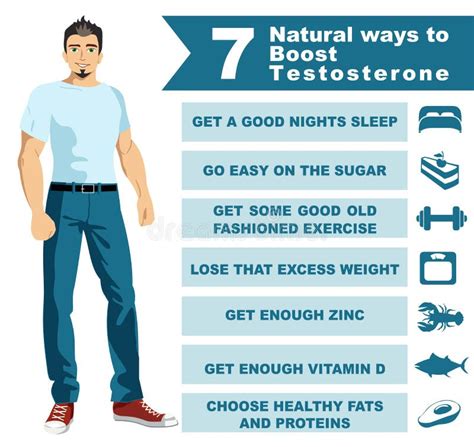Conquering Lower Back Pain from Your Desk Job
For many men, the demands of a desk job mean spending eight or more hours a day seated. While productivity might soar, your lower back often pays the price. Chronic lower back pain, characterized by stiffness, dull aches, or sharp discomfort, is a common complaint that can significantly impact quality of life and work performance. Fortunately, with a combination of ergonomic adjustments, regular movement, and targeted exercises, you can effectively manage and even eliminate this persistent problem.
Understanding the Root Causes of Desk-Related Back Pain
Lower back pain stemming from prolonged sitting is rarely due to a single factor. Instead, it’s often a combination of several issues:
- Poor Posture: Slouching, rounding your shoulders, or leaning forward puts immense pressure on your lumbar spine and its discs.
- Sedentary Lifestyle: Lack of movement weakens core muscles (abdominals, obliques, lower back) that are crucial for spinal support.
- Tight Hip Flexors and Hamstrings: Sitting for extended periods shortens and tightens these muscles, pulling on the pelvis and altering spinal alignment.
- Improper Ergonomics: A poorly set up workstation forces your body into unnatural and stressful positions.
- Weak Gluteal Muscles: Underactive glutes (“glute amnesia”) can lead to other muscles overcompensating, causing back pain.
Optimizing Your Workspace Ergonomics
Your office setup plays a critical role in preventing and alleviating back pain. A few adjustments can make a significant difference:
- The Chair: Invest in an ergonomic chair with good lumbar support. Adjust the chair height so your feet are flat on the floor (or on a footrest) and your knees are at a 90-degree angle. The backrest should support the natural curve of your lower back.
- The Desk: Ensure your desk height allows your elbows to rest comfortably at a 90-100 degree angle while typing, keeping your shoulders relaxed.
- The Monitor: Position your monitor at arm’s length, with the top of the screen at or slightly below eye level. This prevents neck strain and discourages slouching.
- Keyboard and Mouse: Keep them close to your body to avoid overreaching, which can strain your shoulders and back.

Mastering Proper Sitting Posture
Even with the best ergonomic setup, poor posture can sabotage your efforts. Aim for a neutral spine position:
- Sit Up Straight: Imagine a string pulling your head towards the ceiling, lengthening your spine.
- Engage Your Core: Lightly pull your navel towards your spine to engage your abdominal muscles, which support your back.
- Shoulders Back and Down: Avoid hunching. Let your shoulders relax away from your ears.
- Feet Flat: Keep both feet flat on the floor, or use a footrest if necessary.
- Lumbar Support: Utilize your chair’s lumbar support or a rolled towel placed in the small of your back to maintain its natural curve.
Integrate Movement and Regular Breaks
The human body isn’t designed for prolonged static positions. Regular movement is essential for spinal health and blood circulation. Set a timer to remind yourself to get up and move every 30-60 minutes.
- Walk Around: Take a short walk to the water cooler, restroom, or just around your office.
- Stand Up: Consider a standing desk converter or simply stand up and stretch by your desk for a few minutes.
- Desk Stretches: Perform gentle stretches while seated or standing.

Essential Stretches for Back Pain Relief
Incorporating specific stretches into your daily routine can significantly reduce tension and improve flexibility. Aim for 30 seconds per stretch, repeating 2-3 times.
- Knee-to-Chest Stretch: Lie on your back, pull one knee towards your chest, then the other. Gently pull both knees for a deeper stretch.
- Cat-Cow Stretch: On hands and knees, arch your back as you inhale (cow), then round your spine as you exhale (cat).
- Seated Piriformis Stretch: While seated, cross one ankle over the opposite knee. Gently lean forward to feel a stretch in your glute and hip.
- Figure-Four Stretch: Similar to piriformis, but performed lying on your back.
- Standing Back Extension: Stand tall, place hands on your lower back, and gently arch backward, looking up.

Strengthening Your Core and Glutes
A strong core and powerful glutes provide crucial support for your spine. Incorporate these exercises 2-3 times a week:
- Plank: Hold a straight line from head to heels, engaging your core. Start with 30 seconds and build up.
- Bird-Dog: On hands and knees, extend opposite arm and leg simultaneously while keeping your core stable.
- Glute Bridges: Lie on your back, knees bent, feet flat. Lift your hips off the floor, squeezing your glutes at the top.
- Side Plank: Similar to a regular plank, but balancing on one forearm and the side of your foot.

Lifestyle Adjustments for Long-Term Relief
Beyond ergonomics and exercise, several lifestyle factors contribute to back health:
- Stay Hydrated: Water helps maintain the elasticity and cushioning of spinal discs.
- Maintain a Healthy Weight: Excess weight, especially around the abdomen, adds strain to your lower back.
- Manage Stress: Stress can lead to muscle tension, often manifesting in the neck, shoulders, and lower back.
- Choose Supportive Footwear: Well-cushioned shoes provide better support, especially if you also spend time standing.
- Quality Sleep: Ensure your mattress and pillows provide adequate support for a neutral spinal alignment.

When to Seek Professional Help
While many cases of desk-related back pain can be managed with self-care, it’s important to know when to consult a doctor or physical therapist. Seek professional advice if:
- Your pain is severe or worsens over time.
- You experience numbness, tingling, or weakness in your legs or feet.
- Pain radiates down one or both legs (sciatica).
- You experience bladder or bowel problems.
- Your pain doesn’t improve after a few weeks of self-care.
Conclusion
Lower back pain from sitting at a desk all day is a common ailment for men, but it doesn’t have to be a permanent fixture in your life. By proactively adjusting your ergonomic setup, practicing good posture, taking regular movement breaks, and committing to a routine of targeted stretches and strengthening exercises, you can significantly reduce discomfort and improve your overall well-being. Prioritize your spinal health – your future self will thank you.




